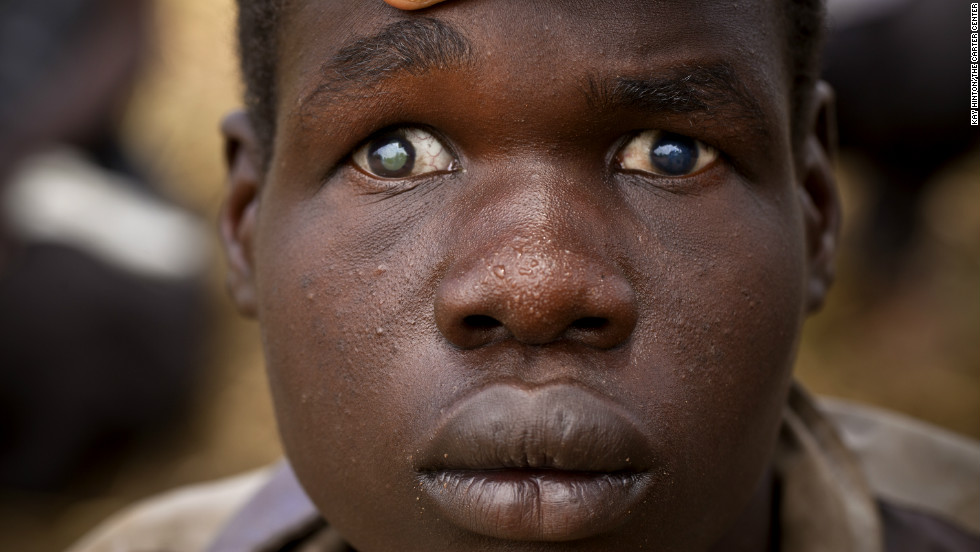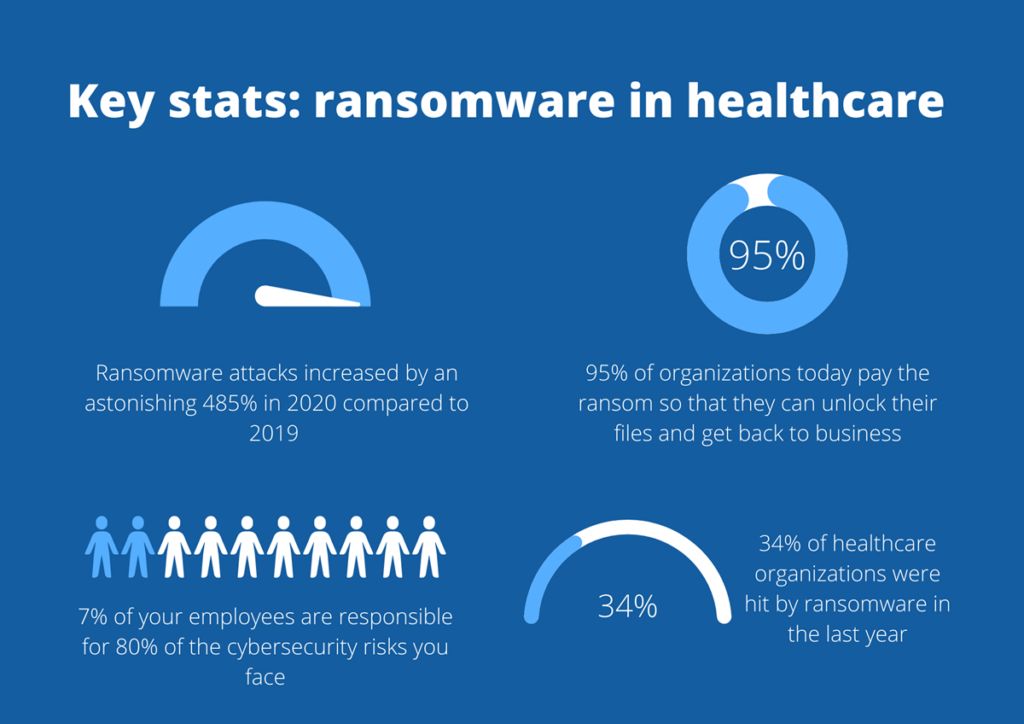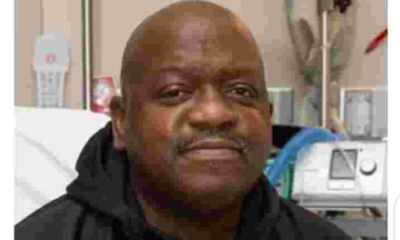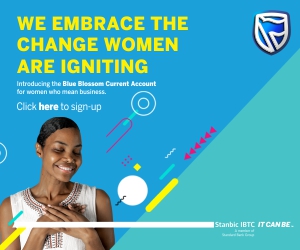Health
The wait is over as US approves first drug in 20 years for river blindness


Medicines Development for Global Health (MDGH) and the World Health Organisation Special Programme for Research and Training in Tropical Diseases (TDR) announced today that the United States (U.S.) Food and Drug Administration (FDA) approved moxidectin 8 mg oral for the treatment of river blindness (onchocerciasis) in patients aged 12 years and older. The FDA has also awarded MDGH a priority review voucher (PRV).
River blindness is caused by a parasitic worm, Onchocerca volvulus. The disease manifests as severe itching, disfiguring skin conditions and visual impairment, including permanent blindness, caused by the worm’s larvae (microfilariae).
The approval of moxidectin was based on data from two randomized, double-blind, active-controlled clinical studies.
Each study met its respective primary endpoints, showing a statistically significant superiority of moxidectin over the current standard of care, ivermectin, in suppressing the presence of the microfilariae in the skin.
Full results from the Phase III study were published in the Lancet in January 2018 and a safety summary is provided below.
“FDA approval is a momentous achievement for any biopharmaceutical company, but it is a particularly rare and exciting event in the neglected diseases setting,” said Mark Sullivan, Founder and Managing Director of MDGH.
“It takes a broad community to develop a new medicine. FDA approval represents decades of work by thousands of scientists, disease control specialists, expert advisors, community health workers, funders and study participants. We particularly acknowledge the US$13 million investment from the Global Health Investment Fund (GHIF) as well as the extraordinary persistence and dedication of the team at TDR, without whom this would not have happened.”
TDR (the UNICEF/UNDP/World Bank/WHO Special Programme for Research and Training in Tropical Diseases) was instrumental in the development of moxidectin. “We are delighted about the FDA’s decision,” says TDR Director John Reeder. “It is a milestone toward the river blindness endgame and our objective to enable African countries to integrate moxidectin into their elimination strategies.”
This approval is the result of a paradigm-changing approach to the development of new medicines for neglected diseases, enabled by the PRV program. “As neglected tropical diseases are endemic in low and middle-income countries, there are limited markets for medicines. Therefore, finding investors willing to support development in these diseases is extremely difficult,” added Mark Sullivan. “However, the introduction of the FDA’s neglected diseases PRV program has created a market around neglected diseases.”
The PRV legislation was designed to encourage the development of new drug and biological products for neglected diseases. The PRV, a saleable item, permits the holder to accelerate the review of a new drug application (NDA) from the standard 10 months to 6 months. This time saving has significant value to the pharmaceutical industry, thus creating an indirect market for neglected disease treatments.
Dr. Reeder added, “This voucher to MDGH exemplifies the original spirit of the programme – to create incentives for research and development in neglected diseases.”
MDGH is the first not‑for‑profit company to register a medicine through the tropical disease PRV program. “This is exactly what we had in mind when we proposed the PRV program,” said Duke University’s Professor David Ridley, an author of the 2006 paper on which the voucher scheme is based.
“The voucher incentive helped Medicines Development for Global Health attract funding to complete testing and registration for a drug that had been on the shelf. I’m delighted that the voucher program is playing a role in treating patients with river blindness, and one day eliminating the disease.”
“Achieving FDA approval is a critically important milestone for moxidectin, but our work to bring this medicine to those who need it most continues in earnest,” concluded Mr. Sullivan. “MDGH plans to provide the community with additional data, including data in younger children. We are here for the full journey – we have committed our skills and resources to play our part in ridding the world of this disabling disease.”
Top of Form
River Blindness
River blindness is caused by the parasitic worm Onchocerca volvulus, which is transmitted from person to person by black flies that breed in fast-flowing rivers in sub-Saharan Africa, Yemen and small foci in South and Central America.
The association of rivers and streams, together with the worst manifestation of O. volvulus infection, blindness, led to the adoption of the more commonly known term for the disease, “river blindness”.
The millions of larvae (microfilariae) released by the infecting adult parasites invade skin and eyes where they can cause severe manifestations, including permanent blindness, itching and disfiguring skin conditions.
Nearly 200 million people are at risk for river blindness, and more than 99% of people infected live in sub-Saharan Africa. Chemotherapy with ivermectin, previously the only drug currently approved by the FDA for onchocerciasis, is the current standard approach to onchocerciasis control and elimination.
Ivermectin has significantly reduced the disease burden, but new treatment options are needed to accelerate progress toward eliminating parasite transmission.
Moxidectin
Moxidectin is a macrocyclic lactone anthelmintic medicine that selectively binds to the parasite’s glutamate-gated chloride ion channels.
These channels are vital to the function of invertebrate nerve and muscle cells. Moxidectin has activity against O. volvulus microfilariae but does not kill adult O. volvulus parasites.
Patients with river blindness administered moxidectin experienced adverse events consistent with those associated with efficacy.
The nature and severity of adverse events in moxidectin recipients were similar to ivermectin. The most common adverse reactions (incidence > 10%) were: eosinophilia, pruritus, musculoskeletal pain, headache, lymphopenia, tachycardia, rash, abdominal pain, hypotension, pyrexia, leukocytosis, influenza-like illness, neutropenia, cough, lymph node pain, dizziness, diarrhea, hyponatremia and peripheral swelling.
The efficacy of repeat administrations of moxidectin has not been assessed. Moxidectin is supplied as 2 mg tablets for administration as an 8 mg dose per oral to patients at least 12 years of age with O. volvulus infection.
Source: CNBC
Health
Cybercriminals Successfully Encrypted Data in Ransomware Attacks on Nearly 75% of Healthcare Organizations, Sophos Survey
Only 24% of Healthcare Organizations Were Able to Disrupt a Ransomware Attack Before Attackers Encrypted Their Data. This is the Lowest Rate of Disruption in 3 Years, reports SANDRA ANI


Sophos, a global leader in innovating and delivering cybersecurity as a service, today shared its sector survey report, “The State of Ransomware in Healthcare 2023,” which revealed that, among those organizations surveyed, cybercriminals successfully encrypted data in nearly 75% of ransomware attacks.
This is the highest rate of encryption in the past three years and a significant increase from the 61% of healthcare organizations that reported having their data encrypted last year.
In addition, only 24% of healthcare organizations were able to disrupt a ransomware attack before the attackers encrypted their data—down from 34% in 2022; this is the lowest rate of disruption reported by the sector over the past three years.
“To me, the percentage of organizations that successfully stop an attack before encryption is a strong indicator of security maturity. For the healthcare sector, however, this number is quite low—only 24%. What’s more, this number is declining, which suggests the sector is actively losing ground against cyberattackers and is increasingly unable to detect and stop an attack in progress.
“Part of the problem is that ransomware attacks continue to grow in sophistication, and the attackers are speeding up their attack timelines. In the latest Active Adversary Report for Tech Leaders, we found that the median time from the start of a ransomware attack to detection was only five days. We also found that 90% of ransomware attacks took place after regular business hours. The ransomware threat has simply become too complex for most companies to go at it alone. All organizations, especially those in healthcare, need to modernize their defensive approach to cybercrime, moving from being solely preventative to actively monitoring and investigating alerts 24/7 and securing outside help in the form of services like managed detection and response (MDR),” said Chester Wisniewski, director, field CTO, Sophos.


Additional key findings from the report include:
- In 37% of ransomware attacks where data was successfully encrypted, data was also stolen, suggesting a rise in the “double dip” method
- Healthcare organizations are now taking longer to recover, with 47% recovering in a week, compared to 54% last year
- The overall number of ransomware attacks against healthcare organizations surveyed declined from 66% in 2022 to 60% this year
- Compromised credentials were the number one root cause of ransomware attacks against healthcare organizations, followed by exploits
- The number of healthcare organizations surveyed that paid ransom payments declined from 61% last year to 42% this year. This is lower than the cross-sector average of 46%
“In 2016, the Red Cross Hospital of Córdoba in Spain suffered a ransomware attack that reached servers and encrypted hundreds of files, medical records and other important patient information. It was a major disruption to our operations and interfered with our ability to care for our patients. The stakes are high in ransomware attacks against healthcare organizations—and attackers know that—meaning we’ll always be a target. After this ransomware attack, we worked hard with Tekpyme to bolster our defenses, and now we have reduced our incident response time by 80%. I think the industry as a whole is making improvements, but there is still work to do, because of the constantly changing nature of cybercrime. Hopefully healthcare organizations can leverage the help that is available from security vendors such as Sophos to prevent a very real ‘threat to life’ if systems go offline due to a ransomware attack,” said José Antonio Alcaraz Pérez, head of information systems and communications at Cruz Red Andalusia in Spain.
“Cyberspace today is ripe with technically sophisticated actors looking for vulnerabilities to exploit. What all this translates to is a multidimensional cyberthreat of actors who have the tools to paralyze entire hospitals. Partnering with the private sector is critical to our mission. The information [they] share has real-world impacts and can save real businesses and real lives,” said Christopher Wray, FBI Director.
Sophos recommends the following best practices to help defend against ransomware and other cyberattacks:
- Strengthen defensive shields with:
- Security tools that defend against the most common attack vectors, including endpoint protection with strong anti-ransomware and anti-exploit capabilities
- Zero Trust Network Access (ZTNA) to thwart the abuse of compromised credentials
- Adaptive technologies that respond automatically to attacks, disrupting adversaries and buying defenders time to respond
- 24/7 threat detection, investigation and response, whether delivered in-house or by a specialized Managed Detection and Response (MDR) provider
- Optimize attack preparation, including regularly backing up, practicing recovering data from backups and maintaining an up-to-date incident response plan
- Maintain security hygiene, including timely patching and regularly reviewing security tool configurations
To learn more about the State of Ransomware in Healthcare 2023, download the full report from Sophos.com.
*The State of Ransomware 2023 survey polled 3,000 IT/cybersecurity leaders in organizations with between 100 and 5,000 employees, including 233 from the healthcare sector, across 14 countries in the Americas, EMEA and Asia Pacific.
Health
LUTH Doctor Slumps And Dies After 72hrs Call In The Neurosurgery Unit


Outrage As LUTH Doctor Dies After 72-hour Non-stop Shift
Tweeps have taken to X to share their thoughts on the death of a young doctor, identified as Dr. Umoh Michael, who died on Sunday after allegedly working 72 hours straight.
According to reports, Michael died during a church service at the United Evangelical Church on September 17. He was said to have worked a 72-hour non-stop shift at the Lagos University Teaching Hospital, Idi-Araba, where he was a resident doctor.
Doctors under the aegis of the Association of Resident Doctors, LUTH chapter, in a letter addressed to the Chief Medical Director, LUTH, Prof. Wasiu Lanre Adeyemo, attested to the fact that the young doctor was overworked.
They claimed Michael returned home at about 3:00 a.m. Sunday after a 72-hour shift in the hospital, adding that he had barely slept in their apartment before that day.
The statement partly read, “We the house officers are in deep grief over the loss of our colleague, a co-house officer (Dr Umoh Michael) who died on 17th September, 2023, after having a 72hrs call in the Neurosurgery Unit.
“He is said to have been on call 72hrs before arriving home on Sunday morning to get set for church service, reaching his worship center (United Evangelical Church) where he slumped in the church at about 11 am.”
“His roommate attested to the fact that Umoh Michael had barely slept in their apartment over the past one week as he was always on call or the day he returned home was around 3 a.m. after surgeries and other activities in the Neurosurgery Unit.”
Reacting to the sad incident, LUTH’s Public Relations Officer, Omolola Fakeye, who spoke on an online platform (not PUNCH) Online said, “It is not true that anybody worked for 72 hours. I have not been briefed about his death.
“We were at a programme yesterday (Monday), but I will find out; I can’t say anything now. I will check the medical report of what could have happened because anybody can say anything, but the medical report will show us what happened.”
May his soul rest in peace.
Health
Why You Need To Drink More Water Than You Use To


Hello! It’s the weekend, And as usual, We want to share some quick important healthy living tips with you.
Today, We will be sharing on the IMPORTANCE OF DRINKING ENOUGH WATER.
Do you know that Adult humans are 60 percent water, and our blood is 90 percent water? Now, There isn’t an agreed quantity of water that must be consumed daily. You only need to drink as plenty as you should.
Water can be said to be one of the highest natural medicines to man, As it helps avoid a lot of sicknesses like kidney stones, And it also helps in their healing process.
Here are a few importance of drinking enough water;
1. It boosts skin health and beauty: With dehydration, the skin can become more vulnerable to skin disorders and premature wrinkling.
2. It cushions the brain, spinal cord, and other sensitive tissues: Dehydration can affect brain structure and function. It is also involved in the production of hormones and neurotransmitters. Prolonged dehydration can lead to problems with thinking and reasoning.
3. It regulates body temperature: Water that is stored in the middle layers of the skin comes to the skin’s surface as sweat when the body heats up. As it evaporates, it cools the body. In sport.
4. The digestive system depends on it: The bowel needs water to work properly. Dehydration can lead to digestive problems, constipation, and an overly acidic stomach. This increases the risk of heartburn and stomach ulcers.
5. Adequate water flushes body waste easily: For sweating and removal of urine and feces.
6. The airways need it: When dehydrated, Airways are restricted by the body in an effort to minimize water loss. This can make asthma and allergies worse.
7. It helps maintain body blood pressure.
8. It prevents kidney damage: The kidneys regulate fluid in the body. Insufficient water can lead to kidney stones and other problems.
9. Consuming enough water instead of sweetened drinks helps with weight loss.
10. Joint Lubrication: Cartilage, found in joints and the disks of the spine, contains around 80% water. Dehydration can reduce the joints’ shock-absorbing ability, leading to joint pain.
Please drink enough water!
-



 News5 days ago
News5 days agoEkiti Students Caught On Camera Bullying A Fellow Student, Have Been Expelled
-



 Politics4 days ago
Politics4 days agoLagos Water Corporation Starts Protest Against Sack Of Workers
-



 Politics3 days ago
Politics3 days agoSenate Amends NDLEA Act, Approves Death Penalty For Dangerous Drugs Manufacturers And 15 Years Imprisonment For Users
-



 News3 days ago
News3 days agoRIMA Foundation Clocks 20 Years
-



 Spotlight3 days ago
Spotlight3 days agoYoung Man Named Young C, Delves Into The Challenge Of Being Buried Alive For 24 Hours
-



 News2 days ago
News2 days agoPrince Harry And Meghan Markle Arrive Nigeria Today, May 10th
-



 Politics1 day ago
Politics1 day agoFuel Scarcity Will Soon Be Over – Senate Leader Says
-



 News38 mins ago
News38 mins agoFirst Man To Receive Pig Kidney Transplant Has Died






